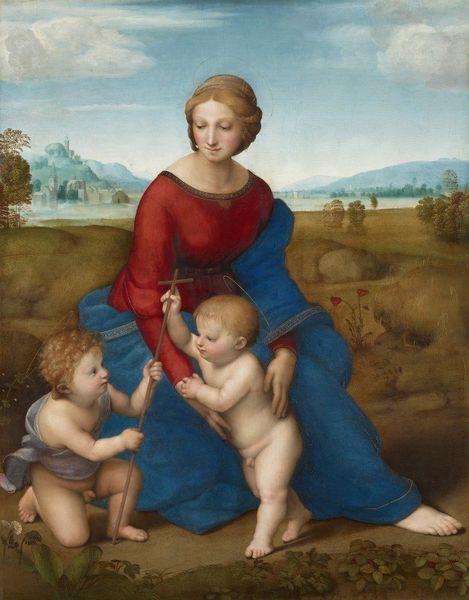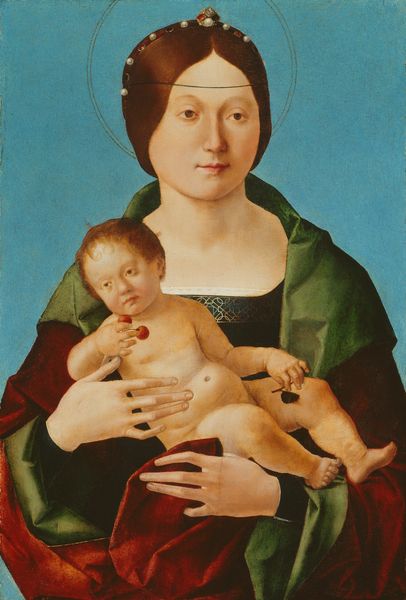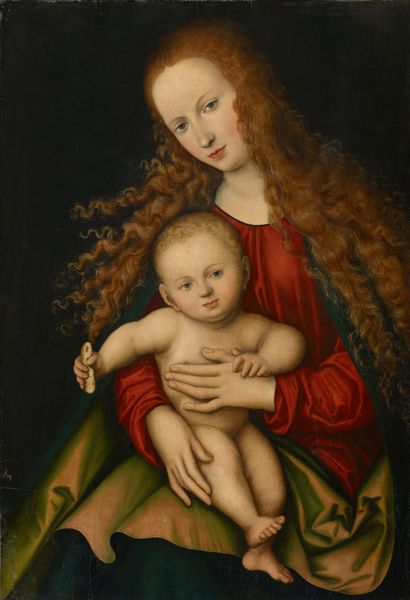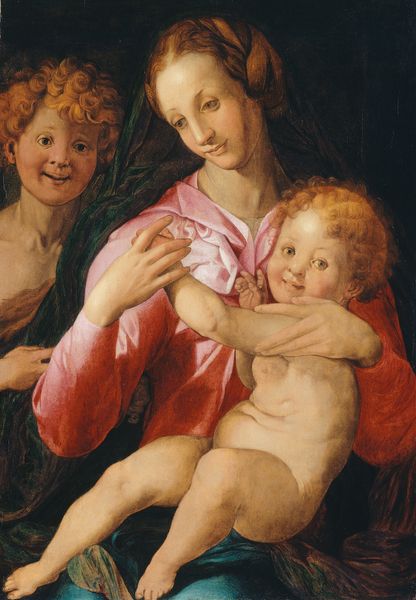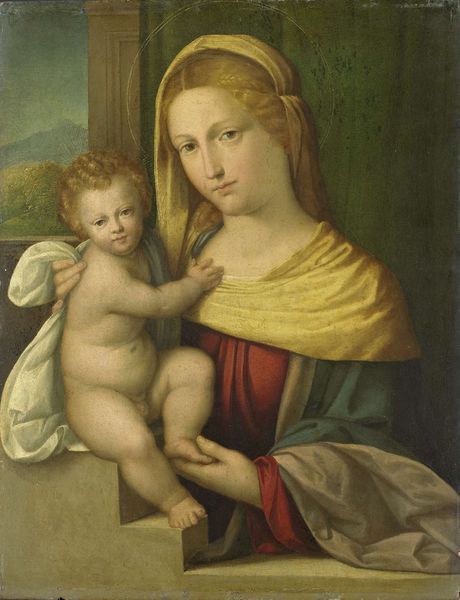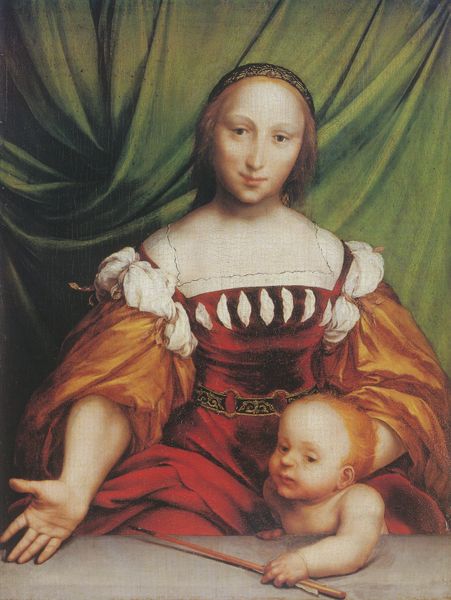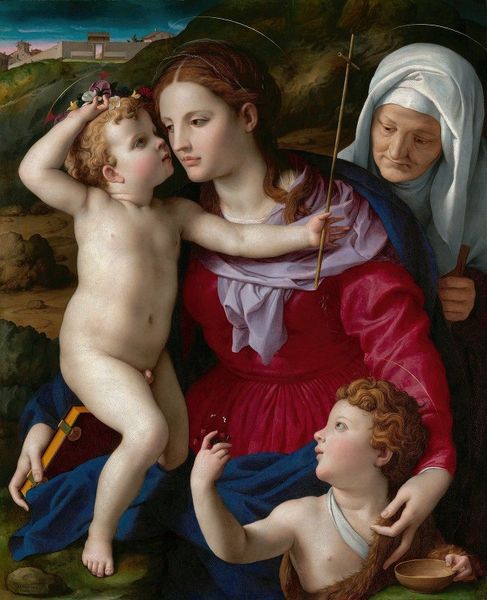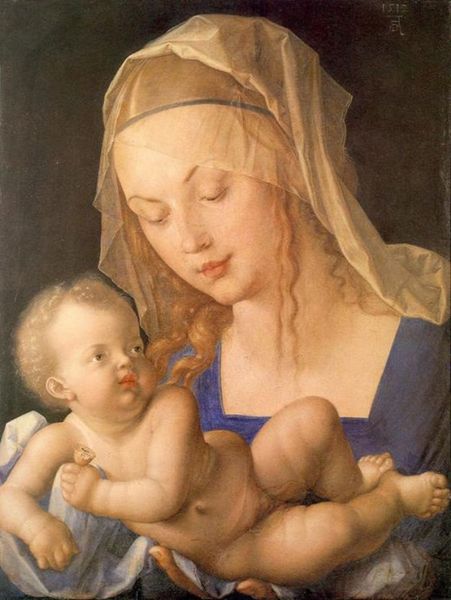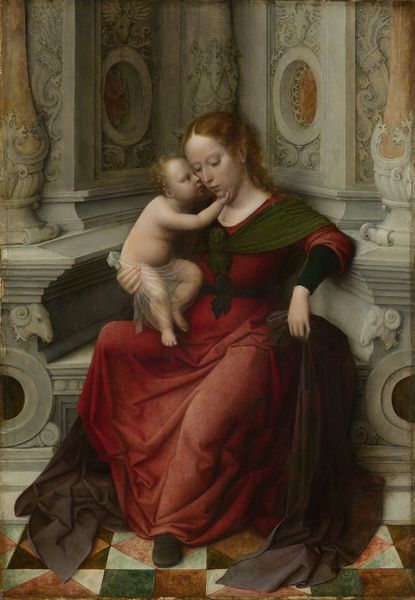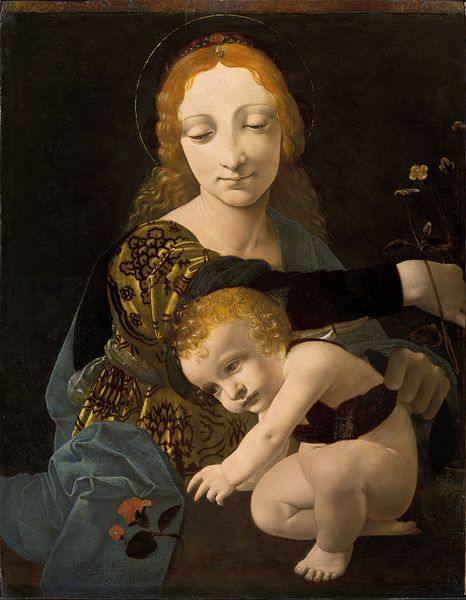
Charity (The Family of the Artist) 1528
0:00
0:00
hansholbeintheyounger
Palais des Beaux-Arts de Lille, Lille, France
painting, oil-paint
#
portrait
#
painting
#
oil-paint
#
figuration
#
11_renaissance
#
group-portraits
#
northern-renaissance
Dimensions: 76.8 x 64 cm
Copyright: Public domain
Editor: Here we have Hans Holbein the Younger's oil painting, "Charity (The Family of the Artist)," created around 1528. There’s a stillness and formality in this group portrait that feels very deliberate. What are your thoughts when you look at this work? Curator: Well, first off, it is vital to acknowledge the socio-political context of this period. Holbein, a German artist working in a time of religious and political upheaval, paints this very intimate family portrait, but what does it signify? Editor: Intimate, yet so… reserved? Curator: Precisely. The Protestant Reformation was challenging established institutions, including the Catholic Church's emphasis on charity. Does Holbein position the family as a self-contained unit of "charity" or love? What are the implications of depicting the family instead of traditional religious iconography as the epitome of 'Charity'? Editor: So the setting itself sends a specific message? Curator: Absolutely. Furthermore, notice the composition. It's hierarchical: the mother is centered and larger, framing the children. What does it convey about gender roles and societal expectations during the Renaissance? Was Holbein commenting or complying? Editor: That’s fascinating. I hadn't considered how subversive the very act of depicting his family could be, in its implicit commentary of society’s ideals. Curator: It really invites questions about the power of artistic representation to uphold or challenge the norms of its time. Editor: This was insightful. It makes me see how a seemingly simple portrait speaks volumes about a whole era. Curator: It also serves as a good reminder that context shapes our readings of images from centuries ago. I leave you with a challenge: consider who this was created for and its role in larger political forces.
Comments
No comments
Be the first to comment and join the conversation on the ultimate creative platform.


